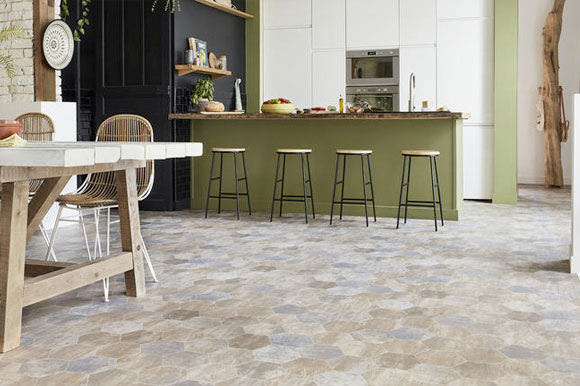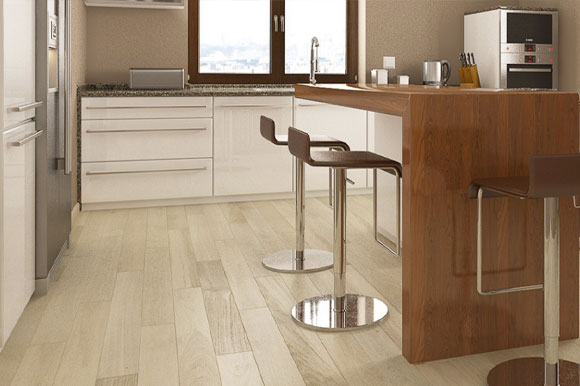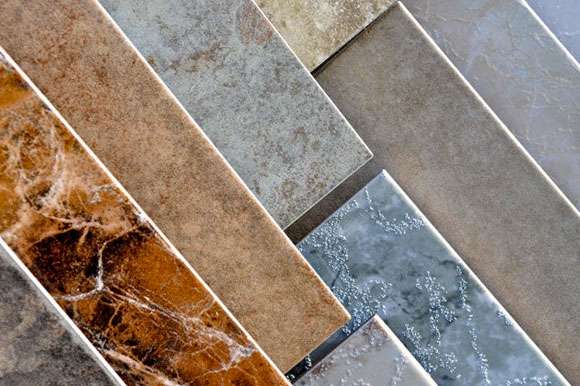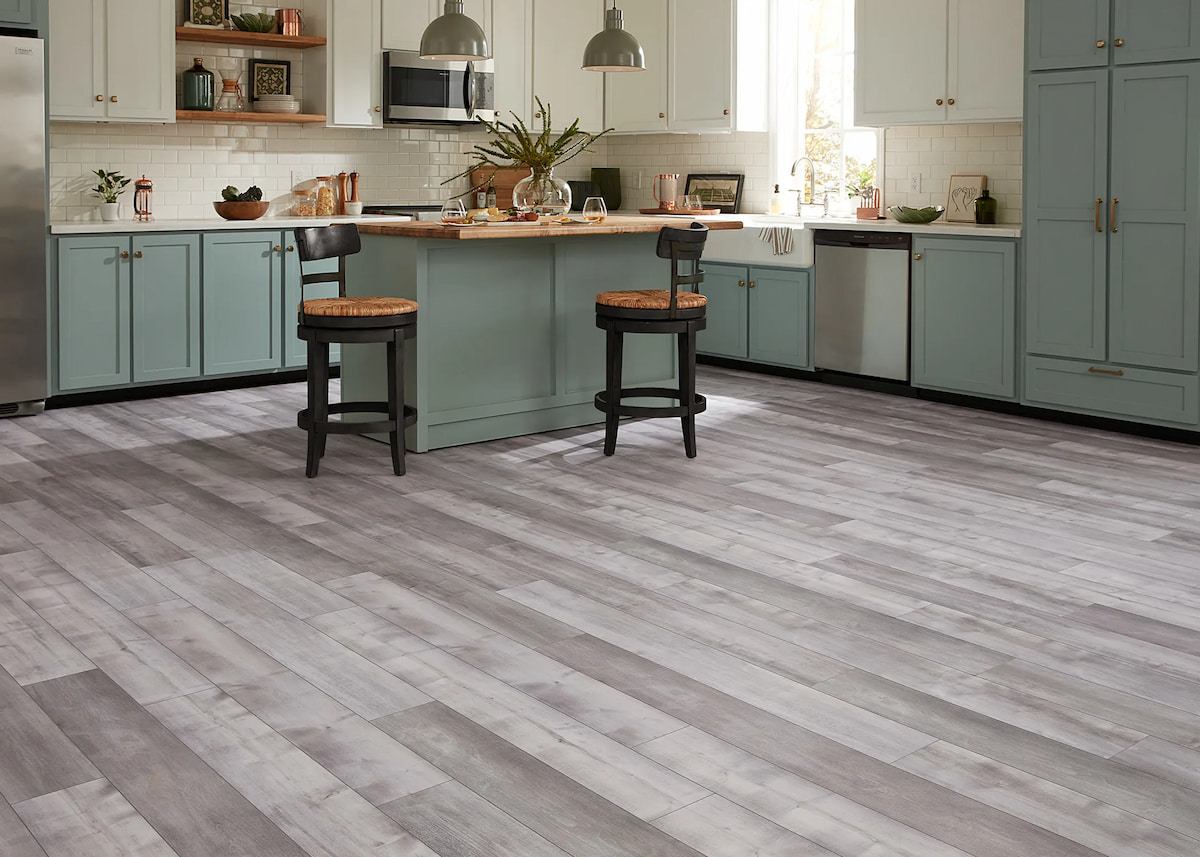When it comes to renovating your kitchen, choosing the right type of flooring is one of the more important decisions you’ll make. The kitchen is often the focal point of a home, and depending on the size of your family it’ll see a lot of foot traffic and wear and tear. That said, it must tolerate stains, water spills, and frequent temperature changes. Considering these things, how do you choose the best flooring for your kitchen?
Resistance to moisture and scratches, and whether it’s simple to clean and maintain are key decision factors for your kitchen floor. It also needs to be comfortable enough underfoot so people can feel good while cooking for hours. That said, there are a few types of flooring that meet most of these criteria, and they are vinyl, ceramic and porcelain tiles. Let’s see how they compare.
Vinyl Tiles
If you want to invest in something that’s as beautiful as it is durable, vinyl kitchen floor tiles are the way to go. This is due to the fact that vinyl can be made to look like some of the best floors on the market, while being soft and resistant to daily wear and tear, which is what makes it ideal for the kitchen.

Vinyl flooring is made completely of a synthetic substance known as polyvinyl chloride plastic (PVC). PVC is heated and pressed into thin layers, which are then glued together to make vinyl tiles or sheets. Each piece of vinyl has a photorealistic visual layer that can mimic the look of hardwood, stone, or ceramic, as well as a textured surface layer that mimics the feel of authentic wood grains and stone minerals.
Vinyl is long-lasting, adaptable, and inexpensive, and it can withstand wetness and heavy foot traffic. It is sometimes mistaken with other resilient flooring materials such as linoleum and laminate – and while luxury vinyl has similarities to laminate, there are fundamental distinctions in their manufacture that set them apart.
As mentioned, vinyl flooring is available in two varieties: sheets and tiles. Sheet flooring, which is placed down in 2 or 3-metre wide sheets, is water-resistant and simple to instal. Vinyl tile flooring is available in tile sizes of half a metre and has the appearance of ceramic tile but is less expensive.
If you’re looking for a more attractive result, there’s also luxury vinyl tile (LVT) which looks like stone or wood. LVT is available in planks that are typically half a metre wide by 2 metres long.
Comparing standard vinyl and luxury vinyl, the latter is softer underfoot and has superior sound-blocking capabilities since it’s thicker. This is especially true with luxury vinyl that includes cork or foam underlayment layers. In terms of comfort, high-quality luxury vinyl flooring is preferable to laminate flooring.

If you can afford it, luxury vinyl flooring is typically a better choice than standard vinyl, especially when it comes to real estate value. In most cases, luxury vinyl planks or tiles lack the cachet of solid hardwood or ceramic or stone tile, but the latest luxury vinyl options are at least comparable and maybe better than kitchen flooring solutions.
On other hand, standard vinyl is better if you are on a low budget or for spaces such as family bathrooms or utility laundry rooms, where its seamless structure provides a completely waterproof floor. Also, keep in mind that vinyl flooring is one of the most cost-effective flooring solutions available per square, so if you’re handy, you can save even more money by laying vinyl flooring yourself.
Ceramic and Porcelain Tiles
The other two options that are practical solutions for kitchen floors are ceramic and porcelain tiles. Natural stone, slate, and wood all need considerable work to install, but kitchen floor tiles that mimic these materials are significantly easier.
Most ceramic and porcelain tiles are cut with a dry tile cutter, resulting in less waste of materials. The great thing about these natural-looking tiles is that they don’t need to be sealed after installation. There is one exception, though, and that is polished porcelain tiles. This tile does require post-installation sealing to guarantee the surface stays robust and hardwearing, as well as to help in water repellency throughout the tile’s life.

Another thing that these tiles are popular for is their high level of slip resistance. Slip resistance is determined by two factors: the likelihood of spills on your tile floor and your environmental criteria. The greater the likelihood of spills, the greater the requirement for a slip-resistant floor tile. In addition, houses with small children or the elderly require slip-resistant floor tiles.
To achieve this slip-resistance porcelain and ceramic tiles use various glazes and glaze additives. Slip resistance is further affected by tile size, grout joint spacing, and floor slope. Unglazed ceramic tiles are also more slip-resistant than glazed tiles and are ideal for areas with regular water spills or heavy foot use.
With many easy-care features, porcelain and ceramic tile surfaces make upkeep simple for you. For light cleaning of porcelain and ceramic surfaces, all you need to do is to sweep away dust, crumbs, and other debris that has been gathered, next wipe the floors with clean water alone and allow it to air dry or wipe them with a microfiber cloth.
Although they are related, porcelain and ceramic tiles are more similar rather than the same. Porcelain tiles are denser than ceramic tiles and, as a result, less permeable. They’re tougher, hence more durable, and absorb less water. As a result, they are better suited to high-traffic locations that will see a lot of use, much like the kitchen area.
